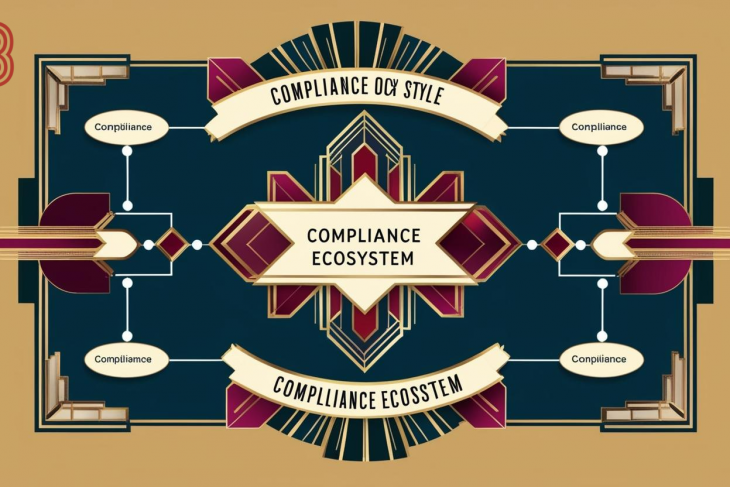
Introduction
In the dynamic world of business, risk is an inevitable component that organizations must address to ensure sustainability and growth. Business risks come in various forms, including financial, operational, strategic, compliance, and legal risks. Companies must implement strategies for risk management, business development, and legal compliance to achieve long-term success.
Understanding Business Risk
Business risk refers to the potential for losses or negative outcomes that affect a company’s operations, profitability, and overall success. These risks stem from internal and external factors that businesses must actively manage. The primary categories of business risk include:
1. Financial Risk
Financial risk pertains to the uncertainty surrounding a company’s financial health and stability. Key financial risks include:
Market volatility affecting investment returns
Liquidity risk arising from cash flow constraints
Credit risk related to customers’ or partners’ inability to meet financial obligations
Interest rate fluctuations impacting borrowing costs
2. Operational Risk
Operational risks arise from failures in internal processes, systems, or personnel. Common operational risks include:
Supply chain disruptions
Cybersecurity threats and data breaches
Fraud and internal misconduct
Workforce-related risks such as turnover and labor disputes
3. Strategic Risk
Strategic risks result from poor business decisions, failure to adapt to market trends, or ineffective execution of business plans. Examples include:
Loss of competitive advantage
Poor product innovation leading to reduced market share
Mergers and acquisitions that do not deliver expected synergies
4. Compliance and Regulatory Risk
Compliance risk arises from failure to adhere to industry regulations, laws, and ethical standards. Companies face penalties, reputational damage, and operational restrictions if they fail to comply. Key compliance risks include:
Data protection laws such as the GDPR
Employment laws and workplace safety regulations
Anti-money laundering (AML) and anti-corruption laws
5. Legal Risk
Legal risk is the exposure to lawsuits, regulatory investigations, and contract disputes. Businesses must ensure legal compliance in areas such as:
Contract enforcement and disputes
Intellectual property rights
Consumer protection laws
Corporate governance and fiduciary duties
Business Development: Key Considerations
Business development involves strategies and initiatives aimed at expanding market presence, increasing revenue, and fostering innovation. Companies must consider multiple factors to ensure sustainable growth.
1. Market Research and Analysis
Understanding market trends, customer preferences, and competitors is crucial for business expansion. Companies conduct:
Industry analysis to identify emerging trends
Customer segmentation to tailor products/services
Competitive benchmarking to refine business strategies
2. Strategic Partnerships and Alliances
Collaborations with other businesses can lead to market expansion and resource optimization. Key benefits include:
Shared expertise and knowledge
Enhanced distribution channels
Access to new technologies and innovations
3. Investment in Technology and Innovation
Digital transformation plays a pivotal role in business development. Companies invest in:
Artificial intelligence (AI) and automation
Big data analytics for strategic decision-making
E-commerce and digital marketing solutions
4. Risk Management Strategies for Business Development
A well-structured risk management plan is essential for business growth. Key risk mitigation strategies include:
Diversification to minimize dependency on a single revenue stream
Insurance policies to safeguard against financial losses
Compliance frameworks to ensure legal adherence
Legal Issues in Business and Provision of Opinions
Businesses operate within legal frameworks that dictate how they interact with stakeholders, manage assets, and resolve disputes. Legal professionals provide expert opinions to help companies navigate complex legal matters.
1. Contract Law and Commercial Agreements
Businesses engage in various contracts, including:
Sales agreements
Service contracts
Employment contracts
Lease agreements
Legal experts assess contractual obligations, identify risks, and recommend dispute resolution mechanisms.
2. Intellectual Property (IP) Protection
IP rights are vital for safeguarding innovations and brand identity. Legal opinions on IP issues cover:
Patent registration and infringement matters
Trademark protection and enforcement
Copyright laws and licensing agreements
3. Corporate Governance and Compliance
Corporate governance frameworks ensure ethical business practices and regulatory compliance. Legal professionals provide guidance on:
Board responsibilities and fiduciary duties
Shareholder rights and disputes
Regulatory compliance for publicly traded companies
4. Employment Law and Workplace Regulations
Labor laws protect employee rights and define employer responsibilities. Key legal considerations include:
Employment contracts and termination policies
Workplace discrimination and harassment laws
Wage and hour regulations
5. Dispute Resolution and Litigation
Legal disputes can arise in various business transactions. Companies seek legal opinions on:
Alternative dispute resolution (ADR) mechanisms
Litigation strategies for commercial disputes
Mediation and arbitration processes
The Role of Legal Advisors in Business Risk Management
Legal advisors play a critical role in guiding businesses through legal complexities. Their key responsibilities include:
Conducting legal audits to ensure compliance
Drafting and reviewing contracts to minimize risks
Advising on corporate restructuring and mergers
Representing businesses in regulatory matters and litigation
Summary
Business risk, development, and legal compliance are interconnected aspects that influence corporate success. Companies must proactively identify risks, implement effective development strategies, and seek legal opinions to navigate complex legal landscapes. By integrating risk management and legal expertise into business operations, organizations can achieve sustainable growth and mitigate potential threats.
In a constantly evolving business environment, organizations must remain adaptable and legally compliant while fostering innovation and strategic expansion. The guidance of legal experts ensures businesses make informed decisions, safeguard assets, and maintain their competitive edge in the marketplace.




















